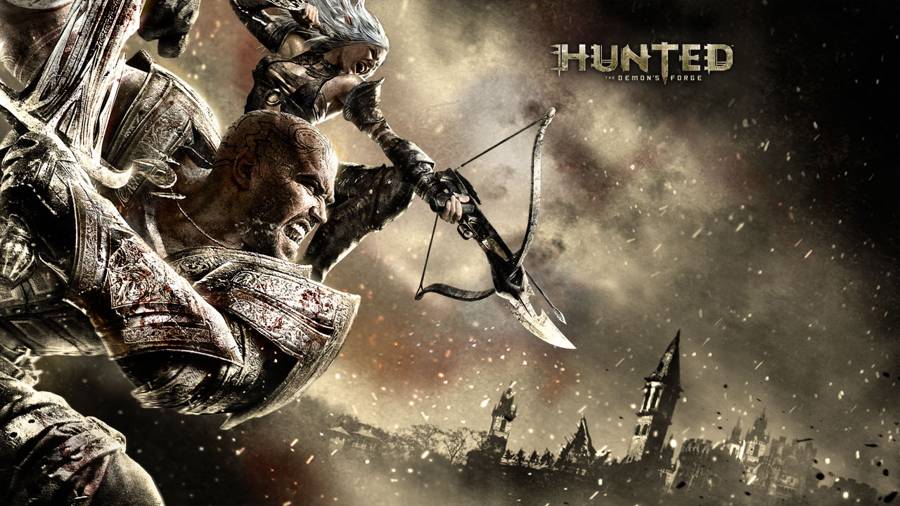

To say that Thief is a slow burn is an understatement. Like its main character Garrett tip-toeing in the shadows, it moves at an almost excruciatingly slow pace. That is, until you get used to it.
A J.J. Abrams Star Trek-like reboot in a well-established franchise, developer Eidos Montreal seems to know what made the original games popular. At the same time, they’ve been able to open the game up to new players. Veterans will find comfort in Thief‘s custom difficulty settings. Don’t want a reticule? Turn it off. Hate the idea of Garrett’s new Focus powers? Turn those off too. Thankfully, new players can leave that all on to aid in thievery. And, quite honestly, you’re going to need all the help you can get.
If you’re not an expert stealth player, Focus really helps you… well, focus… and be able to understand how to operate in the world. It’ll put a blue highlight on objects in the environment that can be used to distract or take out opponents. It’ll draw your attention to different ways to traverse the landscape ahead of — or above — you. I honestly couldn’t have played the game without it.
Focus helped me strategize rather than flounder. A true stealth game, combat is absolutely discouraged in Thief; it’s far better to avoid conflict than throw yourself into it. Sure, you can upgrade your fighting skills and possibly take out two guards in one encounter, but anything more than that is unmanageable.
In fact, those who usually run and gun through games will find it impossible to progress in Thief. Through repeated failed attempts to do so, the necessities of stealth gameplay will be forced into your head: stick to the shadows, be slow and steady, try to avoid encounters at all costs and use distractions to your advantage.
Slow and steady are the buzzwords of the game. You’ll need to move slowly in order to creep around enemies. Garrett takes own his time pilfering through cabinets and bookshelves, stopping to inspect rare items from all angles before pocketing them. By far, the slowest bit about Thief is its story; it’s the biggest slowest burn of them all, taking its time to wash its narrative over you.
Make no doubt about it, Thief is supposed to be savoured. It even has an achievement that rewards players for taking more than 15 hours to the complete the game (which will have to be in my next run-through; oh, #firstworldreviewerproblems). It’s not without variety, though; that slow-paced story really kicks it up a notch when you get to The City’s insane asylum. Apart from being gripping, that chapter is pretty much Outlast-level terrifying. By that point, Eidos Montreal has really drummed the right way to play Thief into your brain, and takes advantage of that in spooky, clever ways. It’s also a great tip of the hat to similar setups in past titles.
I had the chance to preview Thief on PS4 and review on Xbox One, and I couldn’t tell the difference in frame rate and resolution. I definitely picked up on the fact that most of Thief‘s console-specific gimmicks are just that: gimmicks. The PS4 offers a touchpad weapon scroll wheel which is too difficult to use. The Xbox One Kinect will detect if you lean forward and let Garrett swoop without the need to press that pesky “A” button. The Kinect (incorrectly, I might add) had me swooping with every step, and that’s not going to work so well when you fly out of cover accidentally. No matter which next-gen console you’re using, go into settings and turn those functions off.
Taking my advice and in control of your own movements, you could head from quest icon to quest icon in a fairly linear fashion, but side-quests and hidden passages really help flesh out the game. A game like Thief is all about loot; you’re encouraged to slink about in the shadows looking for secrets and shiny things. If you’re playing it right, you’ll easily go over that aforementioned 15 hour play mark.
Still, that’s a big problem with Thief: you have to get used to it and not the other way around. As great as Thief is for those who love first-person stealth games, it definitely won’t be for everyone. It requires patience, strategy and on top of that all, is damn tough. Right or wrong, that’ll turn a number of gamers off straight away. I admittedly was ready to throw down my controller in disgust by about chapter two. I’m glad I didn’t; after a chapter more, I understood Thief and how to play it. As such, I’m really enjoying it.
It’s a dicey one, boys and girls; Thief does stealth right in a time where it’s not nearly as appreciated as it once was. Like Garrett, tread carefully with this one; you’ll know if it’s a good fit for you.




 GTA 5 Essentials #5: Beginnings and Endings
GTA 5 Essentials #5: Beginnings and Endings Borderlands The Pre- Sequel Guide: Concordia Vault Symbol Locations
Borderlands The Pre- Sequel Guide: Concordia Vault Symbol Locations Mass Effect 3 Armor Location Walkthrough
Mass Effect 3 Armor Location Walkthrough Bungies Destiny Revealed
Bungies Destiny Revealed 10 tips for ambitious mayors in Cities: Skylines
10 tips for ambitious mayors in Cities: Skylines